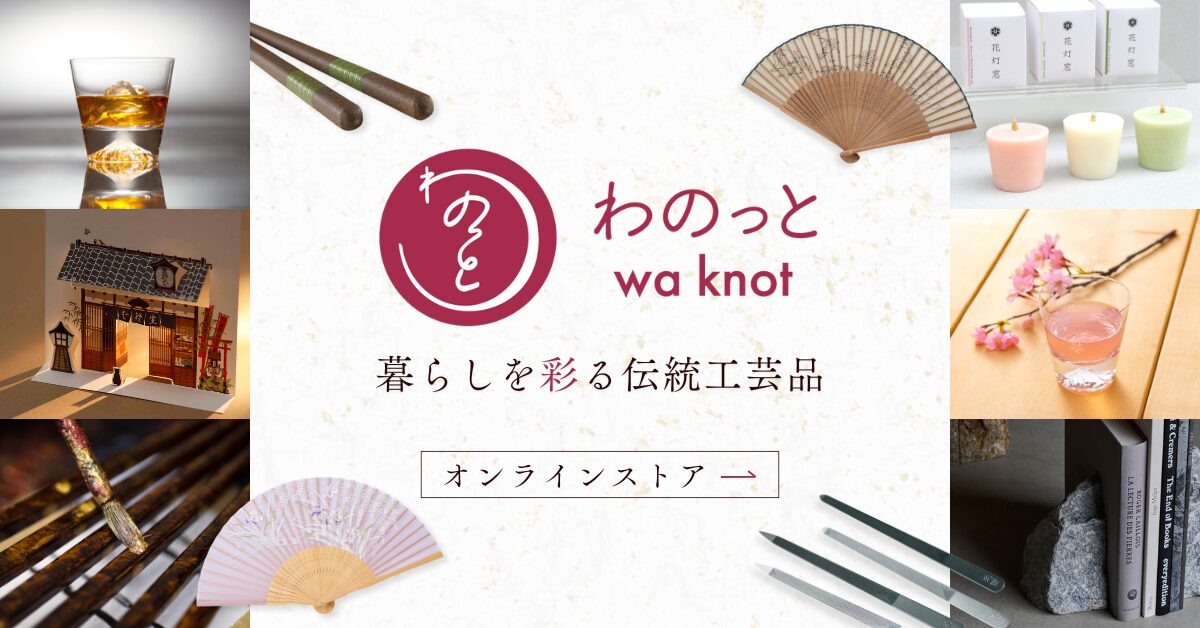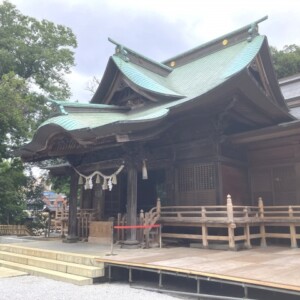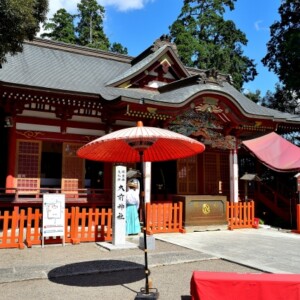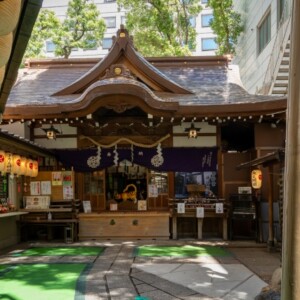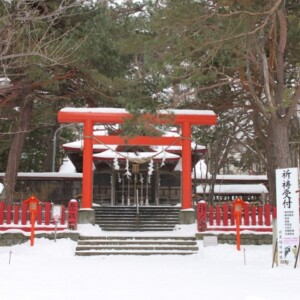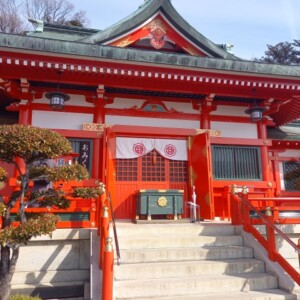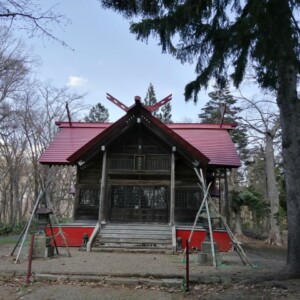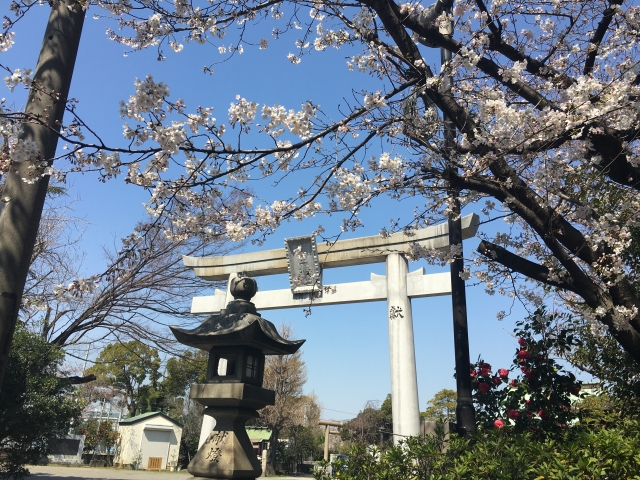
Ushioda Shrine|Complete guide to the history, highlights, and worship information of this historic shrine
Ushioda Shrine, located in Ushioda-cho, Tsurumi-ku, Yokohama City, has an old history that originates in the legend of Yamatotakeru no Mikoto’s expedition to the east. In 1920, the Sugiyama Shrine in Higashi Ushioda-mura and the Mitake Shrine in Nishi Ushioda-mura were merged to form the present shrine, which is well known as the general guardian of the community. It is also known as one of the largest festivals in Tsurumi Ward, with a total of about 70 portable shrines parading in the annual festival held in June.
Outline and basic information about Ushioda Shrine
Ushioda Shrine is located in the Ushioda district of Tsurumi Ward, Yokohama City, and is the local guardian deity with lush green grounds in the midst of a residential area. The current shrine pavilion was built in 1984 and is a magnificent building with beautiful vermilion pillars, white walls, and a green roof.
History and Origin
The history of Ushioda Shrine dates back to the 40th year of the reign of Emperor Keiko (110 A.D.) when, according to shrine legend, the Japanese warrior Takemikoto built a small shrine in Ushioda, where old pine trees grow along the coast, to pray for safety during his expedition from Sagami to Kamisusa.
In the Middle Ages, the shrine became the domain of the Odawara-Hojo clan, and around 1561, during the reign of Emperor Shojincho, Ota Shinrokuro Yasunari, a great-grandson of Ota Dogan, rebuilt the shrine buildings of Sugiyama Shrine in Higashi Ushioda Village and Mitake Shrine in Nishi-Ushioda Village to create a shrine head.
During the Shoho era (1644-1648) of the Edo period (1603-1868), Matsushita Magojuro, a landowner, rebuilt the shrine buildings by order of the shogunate, and in 1671, the shogunate donated the shrine territory.
In the modern era, the shrine was renamed Ushioda Shrine after merging Sugiyama Shrine in Higashi Ushioda Village and Ontake Shrine in Nishi-Ushioda Village in 1920 as a result of arable land clearance and land readjustment associated with the development of the Keihin Industrial Zone in the early Taisho era.
Deities and Benefits
The nine deities of Ushioda Shrine are Kunitokotachi-no-mikoto (guardian of the land), Igumugarumikoto (guardian of industry and commerce), Susanowo-no-mikoto (guardian of good fortune), Toyoke-hime, Ichisunshima-hime, Kikuri-hime, Hondabetsunomikoto (Emperor Ojin) and Sugawara-no Michizane.
These deities are said to bring a wide range of benefits, including national security, prosperity of commerce and industry, protection from bad luck, good fortune, and academic achievement. In particular, the shrine is known for its blessings for travel, business trips, traffic safety, community and household safety, and community development, protecting the daily safety and prosperity of local residents.
Highlights and Features of Ushioda Shrine
The precincts of Ushioda Shrine are openly located adjacent to Ushioda Park, providing a tranquil space surrounded by greenery despite its urban location. The beautiful landscape is a harmony of modern shrine architecture and traditional shrine appearance.
Architectural and Structural Attractiveness
The majestic and splendid current shrine pavilion, built in 1984 with the consensus of the Ujiko worshippers, is a fine example of modern shrine architecture with its impressive vermilion pillars, white walls, and green roof. The shrine grounds are also furnished with information boards that provide instructions on how to visit the shrine, making it a friendly place to visit for first-time visitors.
A magnificent guardian dog is placed in front of the shrine pavilion, and the entire shrine grounds are neatly maintained. The torii gate, erected in 1993, is an important structure that represents the dignity of the shrine.
The natural and scenic beauty of the precincts
The grounds of Ushioda Shrine are spacious and surrounded by greenery, making it a very comfortable environment. The shrine is also integrated with the adjacent Ushioda Park, creating an open space where one can feel nature even though it is located in an urban area.
Old trees and seasonal plantings are arranged in the precincts of the temple, allowing visitors to enjoy the beauty of nature in each of the four seasons. The shrine shows different expressions depending on the season or event, especially during the Hatsumode (first visit to the shrine) season when the shrine is decorated with lanterns, and during festivals when it is gorgeously decorated.
Cultural Properties and Important Collections
Ushioda Shrine preserves many valuable cultural properties. These include a sacred mirror (inscribed in 1294), four building fuda (for both the east and west shrines), an Umioishi (written in the Ota Shokusanjin Chofu Nikki, dated Horeki 4), two swords (inscribed by Gassan Unryuji Teiichi), a scroll of history (by Aoyama Sugiumu), and the kagura (a traditional form of kagura performed in the Doji style, handed down by a Shinto priest).
These cultural assets are valuable materials that tell of the shrine’s long history and the devotion of the local people. In particular, the Kamakura-era sacred mirror and various documents from the Edo period are of great historical value in understanding the history of the area.
Guide to Worship and Visiting the Shrine
Ushioda Shrine attracts many worshippers throughout the year and serves as a spiritual support for the community. Parking is available on the shrine grounds, and the shrine is often used for life’s milestone events such as shrine visits and Shichigosan (seven-five-three) ceremonies.
Worship Etiquette and Manners
When visiting the shrine, first bow in front of the torii gate before entering the shrine grounds. After purifying your hands and mouth at the hand- and mouth-watering basin, go to the hall of worship and bow in the manner of “Nirei Ni-ni-ni-no-hate-ichirie. There is a signboard on the shrine’s grounds that describes the etiquette of worship, so even first-time visitors can visit the shrine with peace of mind.
The shrine is surrounded by greenery and is spacious, making it safe to visit with children. It is important to keep quiet and be considerate of other visitors to the shrine.
Annual and Seasonal Events
Many festivals are held throughout the year at Ushioda Shrine. The main events are the New Year’s Day Festival (January 1), Coming-of-Age Festival (January 15), Setsubun Festival (February 3), Hatsuuma Festival (February First Horse Day), Prayer Festival (February 17), Regular Festival (June 1st Friday, Saturday and Sunday), Grand Purification Ceremony (June 30), Shichigosan Festival (during November), Rooster Market (November Day), Shinnae Festival (November 23) and Grand Purification Ceremony (December (December 31).
The biggest event of all is the annual festival held in June, which is one of the largest festivals in Tsurumi Ward, with a total of about 70 portable shrines carried by 34 Ujiko town councils and about 370 open-air stores. The festival is one of the largest festivals in Tsurumi Ward once a year. The highlights of the festival are the parade of portable shrines at the main shrine, the joint procession of town councils at Yoimiya, and the miya-dashi and miya-irisu at Hongu, making the Ushioda area one of the busiest areas in the city.
Red Seal and Good Luck Charm Information
Ushioda Shrine offers various types of good luck charms, and since there are many different types of benefits, if you are in doubt, consult the Shinto priest directly and he will be able to give you detailed information. There are charms for various wishes such as travel safety, traffic safety, family safety, prosperous business, and academic achievement.
Red seals are also available, and many people receive them as a commemoration of their visit to the shrine. For details, please contact the shrine directly.
Access and usage information
Ushioda Shrine is located in a residential area of Tsurumi Ward, Yokohama, yet is accessible by multiple modes of transportation. In addition to public transportation, visitors can also come to the shrine by private car, and parking is available on the shrine grounds.
Transportation Access
It is a 15-minute walk from the East Exit of JR Tsurumi Station, a 17-minute walk from Keikyu Tsurumi Station on the Keihin Kyuko Line, a 14-minute walk from Bentenbashi Station on the JR Tsurumi Line, and a 16-minute walk from Tsurumi-Ono Station.
By bus, the closest bus stop is the Ushioda-jinja-mae bus stop. Yokohama Municipal Bus Lines 15 and 27 are in service, but they may be detoured during the festival.
The shrine is also accessible by private car, and is easily accessible from the Metropolitan Expressway and national highways.
<Address> 3-131-1, Ushioda-cho, Tsurumi-ku, Yokohama City, Kanagawa Prefecture, 230-0041
Hours of Admission, Fees, and Parking
Ushioda Shrine is generally open for worship all day long, but it is recommended to check in advance about the hours of operation of the shrine office. There is no admission fee, and anyone is free to visit the shrine.
A parking lot is available for visitors with small children who are easily fatigued from visiting the shrine or the Shichigosan shrine. Parking is also free, but public transportation is recommended during major events such as the annual festival, when crowds are expected.
If you wish to offer prayers or perform special rituals, you must contact the shrine in advance to make an appointment. Please inquire directly about fees and times.
Reference sites
Shioda Shrine, Kanagawa Prefectural Shinto Shrine Office: https://www.kanagawa-jinja.or.jp/shrine/1202010-000/
Shioda Shrine – Wikipedia: https://ja.wikipedia.org/wiki/潮田神社


